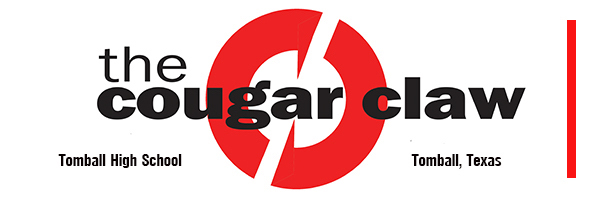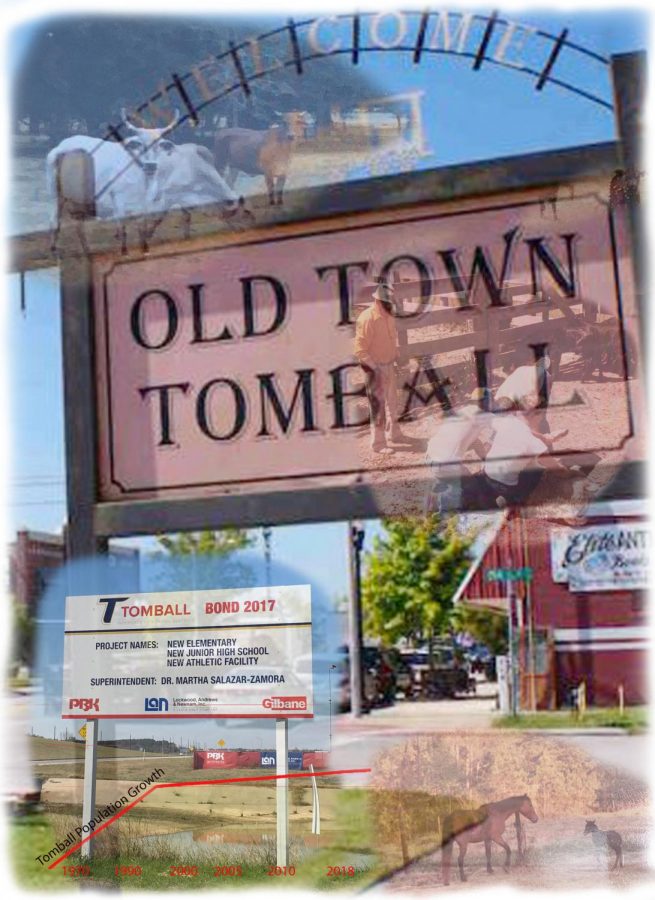Rural Tomball fading fast
Old Town Tomball
February 11, 2020
A one-stoplight town, two-lane roads, trains running through in the middle. For many generations, Tomball has been the small agricultural town about 45 minutes out of Houston. Now, those starting farms, the foundations of Tomball’s past, are shutting down for new neighborhoods.
Tomball, as a city, has just grown immensely. The population started increasing steadily after 1990 and has only continued to grow. Family farms started shutting down as the price for land increased, allowing for more neighborhoods to be built, the last two have been sold within the last year.
“It’s sad to see all the traditions and small-town things go away,” previous front desk secretary Debbie Petrich said.
Tomball was majority farmland, with the name families being the Seber’s, Beckndorf’s, Goodson’s, Free’s, and Breaux’s to name a few.
“There are people that have just been here forever,” Debbie Dent said. “I know many of the families just growing up here.”
The Beckendorf’s, in particular, were a huge part of Tomball, having an intermediate named after them until it closed in 2009.
“The Beckendorf’s have just always been there,” English teacher Cathy Knebel said, “They sold their land for the new stadium and elementary, you can still see some of the old houses on the property.”
The Beckendorf Dairy has already been torn down in preparation for building the new elementary. The Seber Family Dairyland, however, is still standing. The dairy went dark during the summer of 2019, the property is grown over with few cars and no cows in sight, it wasn’t till recently did it seem to have inhabitants again.
“The Seber’s used to own a huge feed store, Seber Feed. Their farm stretched all the way to the highway, Dent said.
The main reason so many farms sell is that the younger generation doesn’t pick up the traditions. Farming isn’t the only option for employment in Tomball anymore and land taxes are high.
“The younger generation doesn’t have the knowledge or need to farm and sell out the land to keep going,” Dent said.
With the growth, Creekside lead the charge. It’s the first development in 2007 and has continuously grown, with the introduction of an element in 2009 and a junior high in 2016 nothing has slowed down further expansion.
“Back when I went to school here all of Creekside was just woods,” Principal Chris Scott said.
Rosehill and Cypress Rosehill, which is still fairly rural, has begun to develop as well, along with the outskirts near the Tomball Memorial campus.
“There was very minimal housing,” Scott said, “Even Cherry Street has grown. It had no housing down there at all and now there are little subdivisions popping up.”
Tomball Memorial opened in 2012 due to the overcrowding at Tomball High. The student population had nearly doubled in less than a couple of years.
“All of my kids went through Tomball,” Petrich said, “ It had a nice small-town feel to it with a little school with no more than 300 students up until near the split.”
There are spots still left untouched by the increasing population near the outskirts of Tomball, near Pinehurst and Stagecoach. Even those areas are starting to change with the new tollway being built.
“Tomball and everything around it is just gonna keep growing,” a local, Leon Free, who’s lived in the area for over sixty years said.
Whatever the case may be, Tomball is always changing and the farms of yesterday are the building complexes of tomorrow.
“A lot of people sell their large properties for various reasons,” Debbie Dent said, “ if they were farming or area grew up around the property price increased and it’s just easier to sell.”












